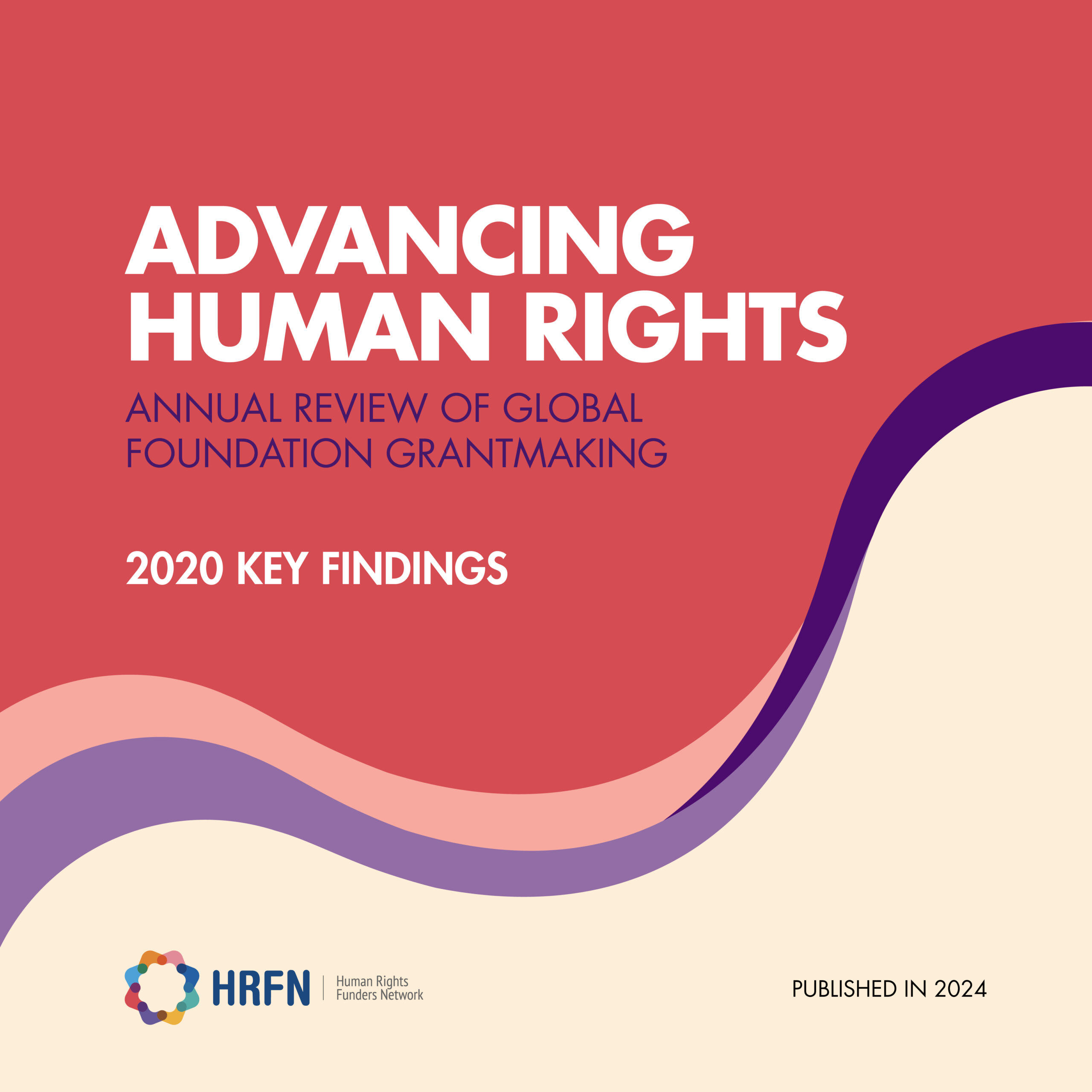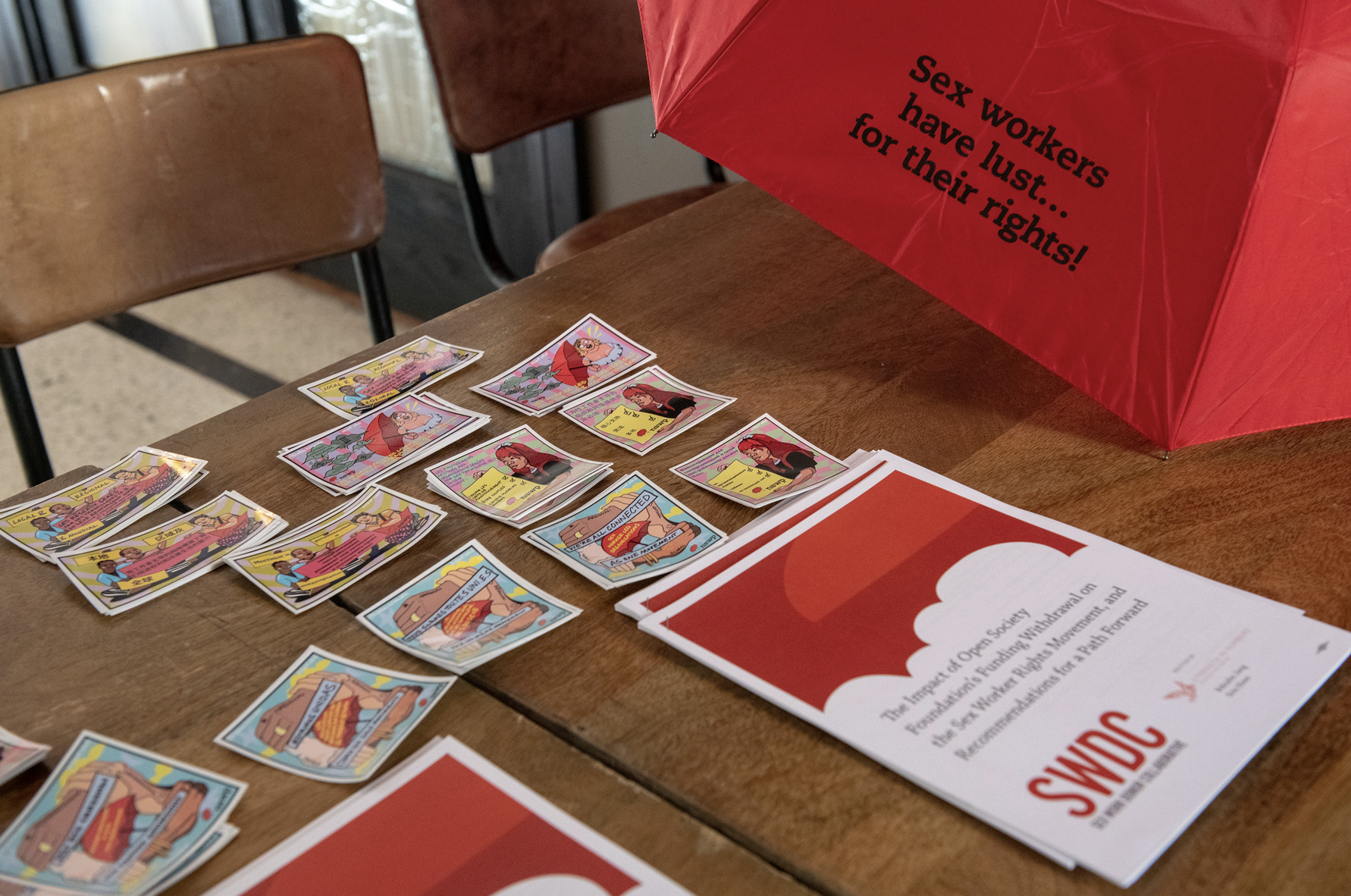Reversing the trend: The time is now to fund disability rights
By Lorraine Wapling, Arlene Wilson-Grant, and Aapurv Jain at the Disability Rights Fund / the Disability Rights Advocacy Fund
Photo credit: Chona Kasinger, Disabled And Here project page.
Photo Description: Six disabled people of color smile and pose in front of a concrete wall. Five people stand in the back, with the Black woman in the center holding up a chalkboard sign reading “disabled and here.” A South Asian person in a wheelchair sits in front.
One in seven persons in the world has a disability. Yet, grants for persons with disabilities constitute just 2% of all human rights funding. Distressingly, this is also the only population group for which global human rights funding has recently declined, based on the latest data released by Candid and Human Rights Funders Network (HRFN).
We’re shaken by this data.
The data paints a grim picture when it comes to funding for disability rights, especially when taking into account the global picture. Between 2017 and 2018, grant dollars for persons with disabilities decreased by $9M, or 14%, among funders who submitted grants data both years.[1] Persons with disabilities make up 15% of the world’s population. The vast majority (80%) live in the Global South, where at least a fifth are amongst the world’s poorest individuals.[2] Persons with disabilities—and their families—are more likely to experience adverse socioeconomic outcomes such as less education, poorer health, lower levels of employment, and higher poverty rates. This marginalization should highlight the need for more support, not less.
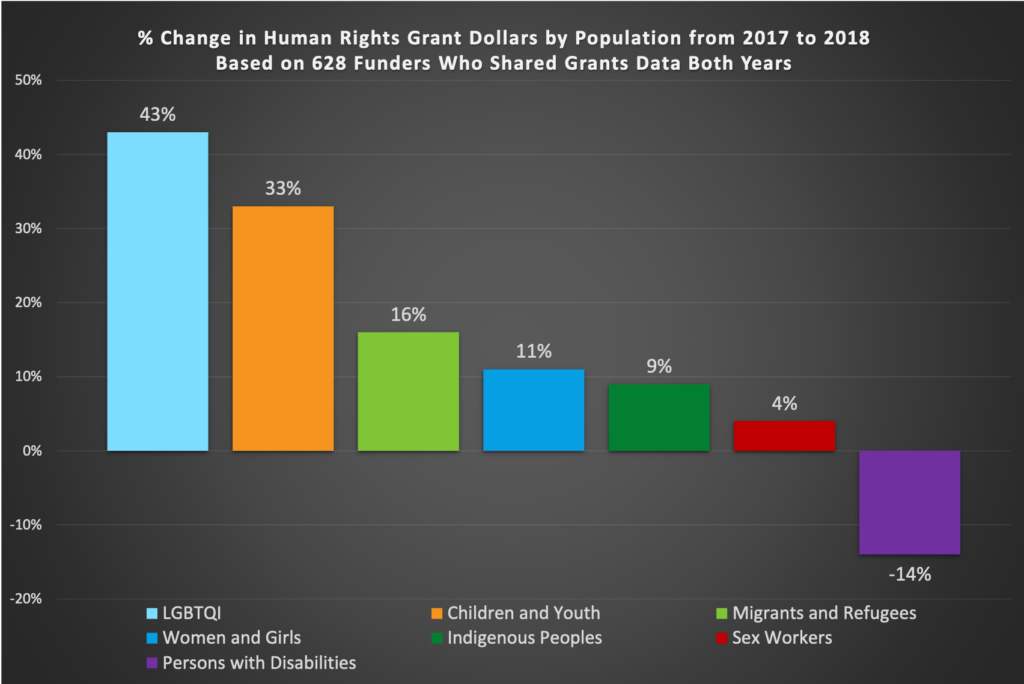
Funding for persons with disabilities who have other marginalized identities—whether based on gender, age, or Indigenous status—is incredibly limited. For example, just 1% of human rights funding for women and girls or Indigenous peoples references persons with disabilities. These data show that, while ‘intersectionality’ is a buzzword in the philanthropy sector, many donors have been slow to translate words into actions in their strategies and portfolios. The lack of funding that intersects with other identities is especially concerning given widespread evidence showing that disability status can compound the risk of human rights violations. For example, one in five women have a disability, and women with disabilities are three to four times more likely to experience domestic violence and sexual abuse than women without disabilities.[3] Gender-based violence against women and girls with disabilities has, in fact, become a dual pandemic in the wake of COVID-19.[4]
Of course, data always has caveats. We are aware that the data from Candid and HRFN does not capture the full funding landscape (based both on the scope of the research and the lack of transparency from many funders) and that it represents giving from a few years ago (2018). Unfortunately, though, funding for disability rights has remained consistently low across all the studies conducted by HRFN and Candid over more than a decade.[5]
These findings are disappointing, to say the least. It has been more than a decade since the United Nations Convention on the Rights of Persons with Disabilities (CRPD)[6] came into force. It is the first global human rights treaty of the 21st century, and it shifted the paradigm about persons with disabilities from ‘objects’ (for example, of charity) to ‘subjects’ with rights, recognizing persons with disabilities as active participants in the achievement of rights. Yet, its implementation remains woefully under-resourced.
How to reverse the trend
There tends to be a strong desire in philanthropy to have expertise before action; we believe this fear of not ‘getting it right’ is one of the reasons keeping funders from investing in disability rights. The solution to this problem is simple: learn from and listen to disabled communities to inform your actions and investments.
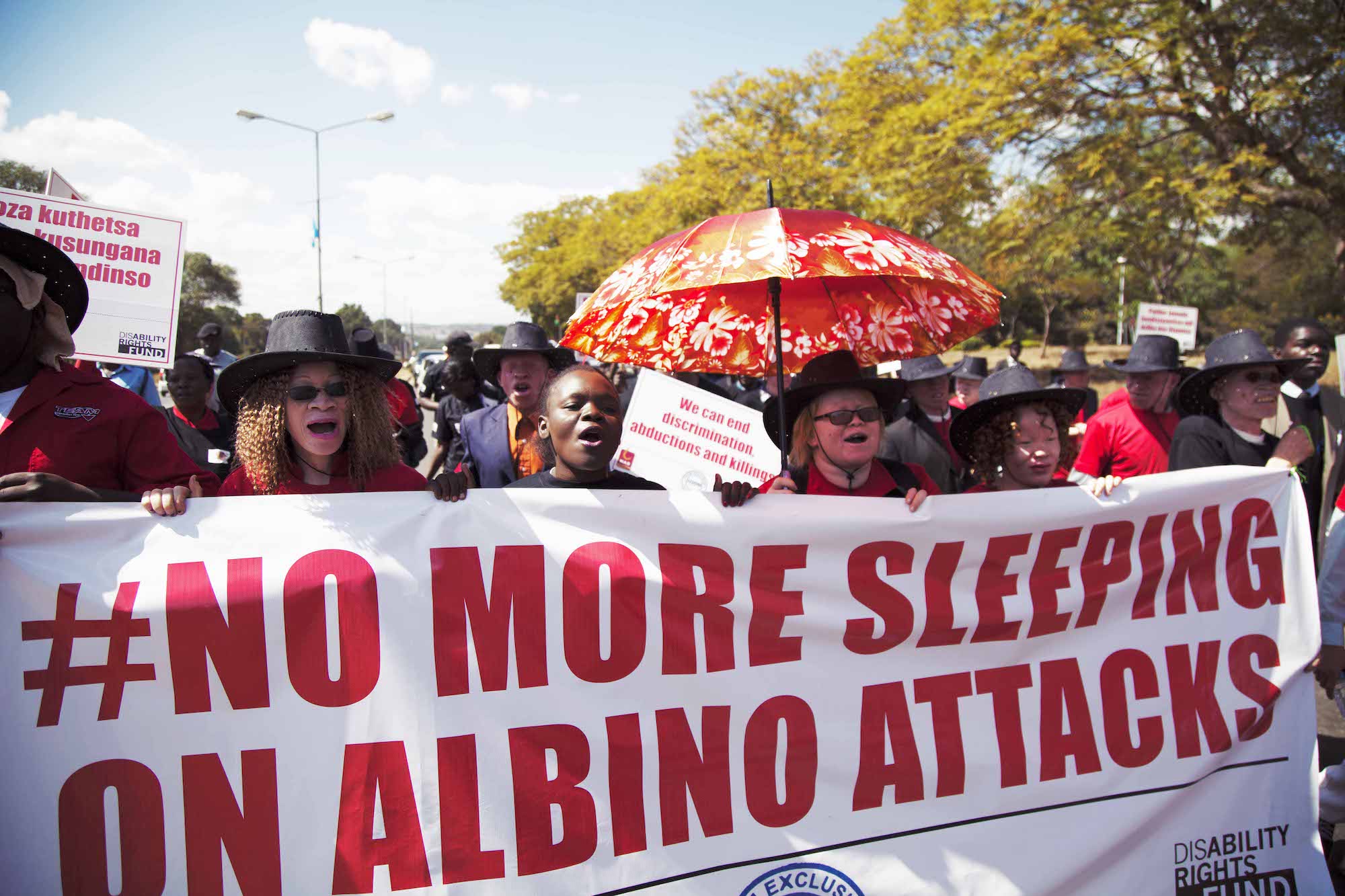
As a participatory grantmaker and a learning organization, we at the Disability Rights Fund (DRF)/ Disability Rights Advocacy Fund (DRAF) don’t always get things right ourselves, and we learn from the disability rights movement every day. And while the Candid/HRFN funding data is distressing, we believe leaders in the philanthropic sector can turn the tide. There are concrete steps that those of you in philanthropic organizations can take towards disability inclusion in your institutions and grantmaking practices:
- Most importantly, fund people with disabilities. They are already in the areas where you work. See them, support them, and fund them.
- As a first step to funding, we urge all funders to start by interrogating and combatting ableism within your organization—from the accessibility of your grantmaking processes, to the design and outreach of your requests for proposals, to hiring and promoting disabled talent within your organization. Signing up for the Disability Inclusion Pledge can be a step in that direction.
- Data is also important. Providing disability demographics about your staff and leadership in response to philanthropic surveys, and ensuring that this information is included in your Candid profile, will affirm your commitment to disability inclusion. We also need more donors to fund and collect data disaggregated by disability so that development programs and donor portfolios can be more inclusively designed. The Washington Group on Disability Statistics has a range of tools which can be adopted for disability disaggregated data collection.
- In addition to sharing data on your organization’s internal steps towards disability inclusion, share funding data on disability with others in the field. Participate in initiatives like the Candid/HRFN Advancing Human Rights research which sheds light on geographic and thematic areas in which foundations are providing financial support to persons with disabilities around the world.
We are happy to note that, in recent years, a few foundations like the Ford Foundation,[7] Global Greengrants Fund, and Borealis Philanthropy have taken steps towards confronting ableism within their organizations and are making significant changes to their processes and investments around disability rights. We at DRF/ DRAF feel that we are in good company when it comes to leading a movement within the philanthropic space to become more disability-inclusive, and we sincerely hope this community continues to grow in the coming years.
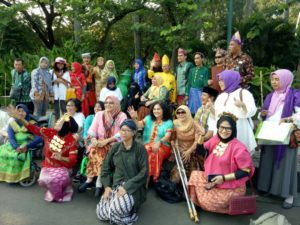
About Us
We, the authors, are part of the Disability Rights Fund (DRF) and the Disability Rights Advocacy Fund (DRAF), one of the only global grantmakers dedicated to funding Organizations of Persons with Disabilities (OPDs) in the Global South. DRF and DRAF have often been the first and the only funder of OPDs, especially those led by marginalized groups of persons with disabilities, like women with disabilities. Between January 2008 and July 2021, DRF and DRAF made nearly 1,650 grants totaling more than $40.3M to over 400 OPDs and partner organizations in 38 countries. Most of this funding to OPDs is to advocate to their national governments to implement inclusive laws and policies, and include persons with disabilities in national censuses and other data gathering exercises, including to track implementation of the Sustainable Development Goals (SDGs) and of international human rights mechanisms, like the CRPD. The disability rights movement’s slogan—nothing about us without us—has informed everything we do as an organization and is embedded in how we do our grantmaking, technical assistance, and advocacy. Since our inception, persons with disabilities have been in the majority at all levels of our decision-making—board, staff, grantmaking committee, and advisors.
One of the ways a lot of foundations have learned about funding disability rights is by being a donor to DRF/ DRAF and participating in our grantmaking processes.
- If you are a grantmaking organization or a donor agency interested in joining our pooled fund, write to us at development@disabilityrightsfund.org.
- If you are an individual donor, you can contribute here.
- We are looking ahead and may form a learning community on funding for people with disabilities. Might your organization be interested in joining? Express your interest, and we’ll follow up.
Lorraine Wapling, Board Co-Chair, DRF/ DRAF
Lorraine Wapling, is an Inclusive Development Specialist working as Co-Director for Impel Consultancy based in the UK. She is Co-Chair of DRF/ DRAF. She has 25 years’ experience working in the development sector on promoting disability rights and is herself a person with a disability. You can contact her via LinkedIn, at https://www.impelconsultancy.org/, or via email at consultant@wapling.me.uk.
Arlene Wilson-Grant, Grants Management Director, DRF/ DRAF
Since 2012, Arlene Wilson-Grant has worked as the Director of Grants Management for DRF/ DRAF. In her role, Arlene works to ensure that grantmaking operations, practices, and data support the mission and strategic goals of the Funds. You can follow her on Twitter (@arlenewg) or write to her at awilsongrant@disabilityrightsfund.org.
Aapurv Jain, Associate Director, Bilateral Relations, DRF/ DRAF
As the Associate Director of Bilateral Relations at DRF/ DRAF, Aapurv manages and cultivates relationships with bilateral donors. Previously, he has worked with national and international organizations across Asia, Africa, Europe, and North America to build cross-sectoral partnerships and mobilize resources to advance the rights of marginalized groups. You can follow him on Twitter (@AapurvJ), contact him through LinkedIn, or write to him at ajain@disabilityrightsfund.org.
[1] https://www.issuelab.org/resources/38475/38475.pdf
[2] https://www.un.org/development/desa/disabilities/resources/factsheet-on-persons-with-disabilities.html
[3] Report of the Special Rapporteur on the rights of persons with disabilities, Sexual and reproductive health and rights of girls and young women with disabilities (2017): https://www.ohchr.org/en/issues/disability/srdisabilities/pages/reports.aspx
[4] https://www.unfpa.org/sites/default/files/pub-pdf/NEW_UNPRPD_UNFPA_WEI_-_The_Impact_of_COVID-19_on_Women_and_Girls_with_Disabilities.pdf
[5] https://humanrightsfunding.org/populations/disabilities/
[6] https://www.un.org/development/desa/disabilities/convention-on-the-rights-of-persons-with-disabilities.html
[7] https://www.fordfoundation.org/the-latest/news/ford-foundation-launches-first-ever-us-disability-rights-program/
